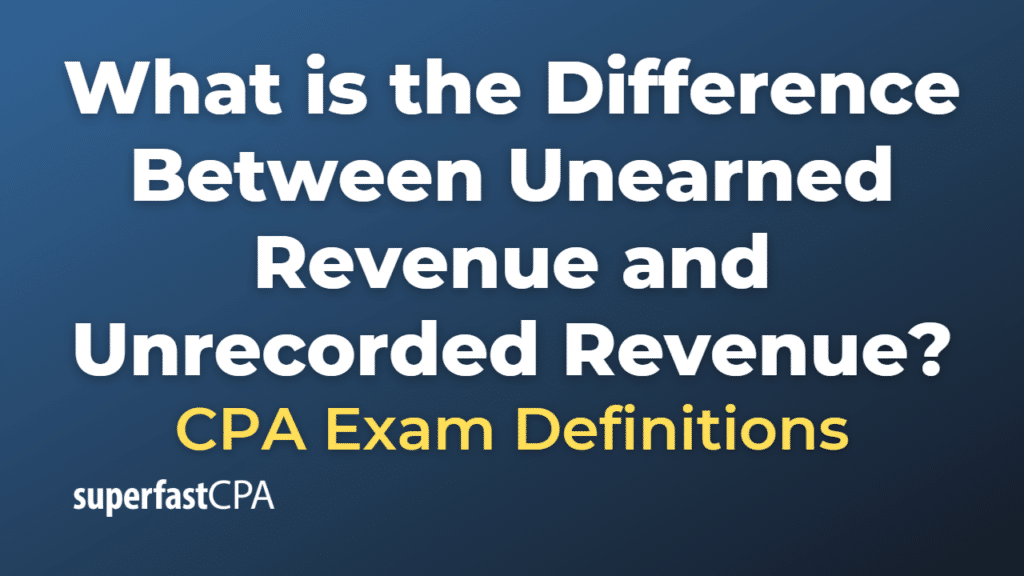Difference Between Unearned Revenue and Unrecorded Revenue
Unearned revenue and unrecorded revenue are two different types of accounting concepts that reflect revenues at different stages of the revenue recognition process:
- Unearned Revenue:
Unearned revenue is money received by a company for a product or service that it has yet to deliver or perform. This often occurs in subscription-based services or prepaid service arrangements.
In the eyes of accounting standards, because the company has an obligation to deliver the goods or services in the future, the money received is not yet “earned” and therefore cannot be recorded as revenue. Instead, it’s recorded as a liability on the balance sheet. Once the product is delivered or the service is performed, the unearned revenue is then converted into earned revenue and is recognized on the income statement. - Unrecorded Revenue:
Unrecorded revenue, on the other hand, is money that a company has earned by providing a good or service but has not yet received payment for, and thus has not yet recorded in its accounting system. This is common in situations where a company extends credit to its customers, allowing them to pay for goods or services at a later date.
When a company provides a good or service but hasn’t yet received payment, it records an account receivable on its balance sheet. Once payment is received, the account receivable is reduced and cash is increased.
In summary, unearned revenue refers to cash received for goods or services not yet delivered, while unrecorded revenue refers to revenue earned from goods or services delivered but not yet paid for or recorded in the books.
Example of the Difference Between Unearned Revenue and Unrecorded Revenue
Let’s consider two separate examples to illustrate the concepts of unearned revenue and unrecorded revenue:
- Unearned Revenue:
Imagine that XYZ Fitness, a gym, sells a one-year membership to a customer for $1,200 upfront on January 1st.
Initially, this $1,200 is considered unearned revenue because XYZ Fitness has not yet provided any service (it still owes the customer 12 months of gym access). The company would record the $1,200 as a liability in an account called “Unearned Revenue.”As each month passes and XYZ Fitness provides the membership services, it gradually recognizes a portion of this unearned revenue as earned revenue. By the end of January, XYZ Fitness would recognize $100 ($1,200/12 months) as earned revenue, reduce the “Unearned Revenue” account by $100, and still have $1,100 of unearned revenue to recognize over the remaining 11 months of the year. - Unrecorded Revenue:
Now, let’s imagine ABC Design, a graphic design firm, completes a project for a client in December, but the client is given 30 days to make payment. The project’s total cost is $5,000.At the end of December, even though ABC Design has finished the work (i.e., it has earned the revenue), it hasn’t yet received payment from the client. So, ABC Design would record $5,000 as an Account Receivable (an asset) on its balance sheet and $5,000 of revenue on its income statement for December. This is considered unrecorded revenue at the moment because it hasn’t been received and recorded as cash.
When the client pays in January, ABC Design would reduce the Accounts Receivable by $5,000 and increase Cash by the same amount.













